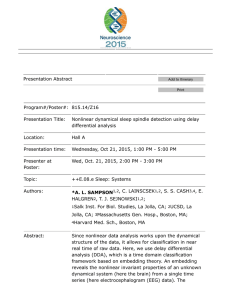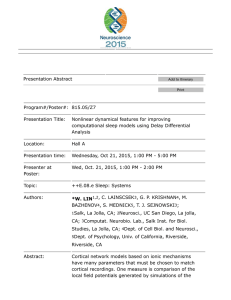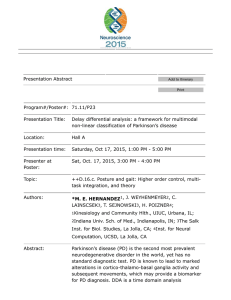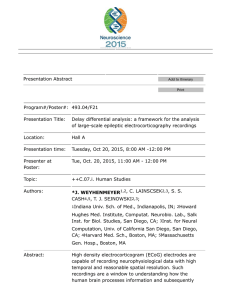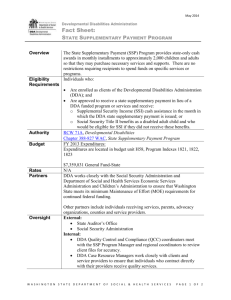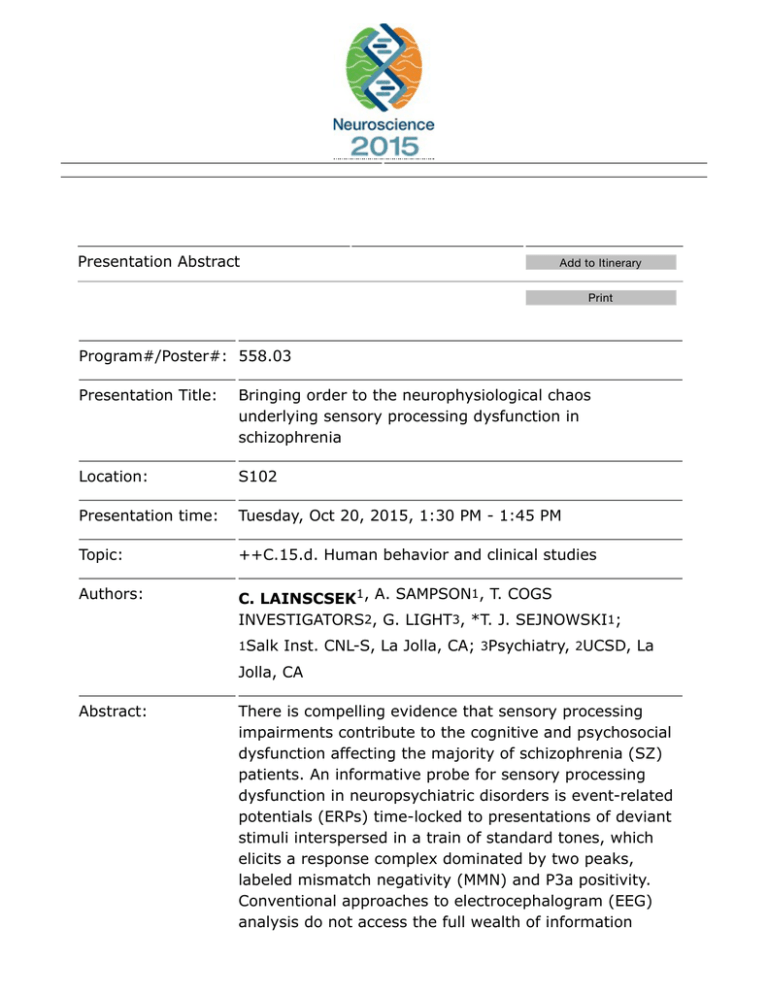
Presentation Abstract
Add to Itinerary
Print
Program#/Poster#: 558.03
Presentation Title:
Bringing order to the neurophysiological chaos
underlying sensory processing dysfunction in
schizophrenia
Location:
S102
Presentation time:
Tuesday, Oct 20, 2015, 1:30 PM - 1:45 PM
Topic:
++C.15.d. Human behavior and clinical studies
Authors:
C. LAINSCSEK1, A. SAMPSON1, T. COGS
INVESTIGATORS2, G. LIGHT3, *T. J. SEJNOWSKI1;
1Salk
Inst. CNL-S, La Jolla, CA; 3Psychiatry, 2UCSD, La
Jolla, CA
Abstract:
There is compelling evidence that sensory processing
impairments contribute to the cognitive and psychosocial
dysfunction affecting the majority of schizophrenia (SZ)
patients. An informative probe for sensory processing
dysfunction in neuropsychiatric disorders is event-related
potentials (ERPs) time-locked to presentations of deviant
stimuli interspersed in a train of standard tones, which
elicits a response complex dominated by two peaks,
labeled mismatch negativity (MMN) and P3a positivity.
Conventional approaches to electrocephalogram (EEG)
analysis do not access the full wealth of information
contained in the ERPs. We have used a new method to
analyze EEG data based on nonlinear data analysis that
extracts the dynamical structure of the data, which
allows for classification of raw data in nearly real time
and is highly generalizable across patients. Delay
Differential Analysis (DDA) is a time domain classification
framework based on embeddings in chaos theory
(Lainscsek and Sejnowski, 2015). An embedding reveals
the nonlinear invariant properties of an unknown
dynamical system (here the brain) from a single time
series (here EEG data). The embedding in DDA serves as
a low-dimensional nonlinear functional basis onto which
the data are mapped. Since the basis is built on the
dynamical structure of the data, preprocessing of the
data (such as filtering) is not necessary. DDA yields a
small number of features (around 4), far fewer than
traditional spectral techniques, which greatly reduces the
risk of overfitting. We applied DDA to EEG data segments
from 1630 subjects (normal control subjects n=753, SZ
n=877) who underwent MMN testing as part of a
Consortium on the Genetics of Schizophrenia (COGS-2)
study. Receiver operating characteristic (ROC) curves
were used to evaluate the extent to which DDA and
traditional ERP components differentiated the 2 groups.
The results of the present study show that DDA
improved the differentiation of SZ from NCS (area under
the ROC curve was 0.80) relative to conventional ERP
analysis (area under the ROC curve was 0.75). Perfect
discrimination occurs with the area under the ROC curve
is 1. In conclusion, DDA is a powerful technique that
capitalizes on information contained in entire EEG signal,
revealing hidden information about nonlinear couplings
that are not apparent in conventional ERP analyses.
Moreover, DDA does not require data cleaning, extensive
data processing or computational demands for rapid
analysis of EEG results. Lainscsek, C. Sejnowski, T. J.
Delay Differential Analysis of Time Series, Neural
Computation, 27, 594-614, 2015
Disclosures:
C. Lainscsek: None. A. Sampson: None. T. COGS
Investigators: None. G. Light: None. T.J. Sejnowski:
None.
Keyword (s):
SCHIZOPHRENIA
EVOKED POTENTIALS
EEG
Support:
Howard Hughes Medical Institute
Office of Naval Research N000141310672
NIH NS040522
Swartz Foundation
Note: When adding items to your Itinerary, please click "Add Checked Selections to
My Itinerary" on EACH page of your search results.
At the Meeting
Sessions/Events
Abstracts
Registration
Hotel/Travel
Exhibits
Fellowships, Awards, and Prizes
Frequently Asked Questions
CME
Access the SFN Member Center
OASIS Technical Support.
Monday - Friday, 9 am - 5 pm CT
Phone: 1-217-398-1792
Email: OASIS Helpdesk
Leave OASIS Feedback
The Online
Abstract
Submission and
Invitation
System
© 1996 - 2015
Coe-Truman
Technologies,
Inc. All rights
reserved.

